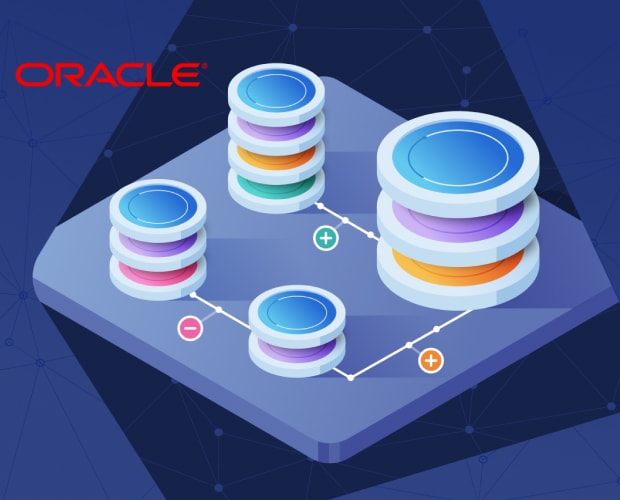
1z0-149: Oracle Database Program with PL/SQL
Best Seller
110 Lectures
22h 56m
Prepare for your Oracle examination with our training course. The 1z0-149 course contains a complete batch of videos that will provide you with profound and thorough knowledge related to Oracle certification exam. Pass the Oracle 1z0-149 test with flying colors.
$13.99$24.99
Curriculum For This Course
- 1. What is PL/SQL and Why to Use? 6m
- 2. PL/SQL Architecture 10m
- 1. Which Option to Choose to Have a Database? 9m
- 2. Option 1: Having the Database with the Oracle Virtual Box 16m
- 3. What is Pluggable Database? 3m
- 4. Option 2: Downloading and Installing the Oracle Database 18m
- 5. Option 2: Unlocking the HR Schema 8m
- 6. Option 2: Configuring and Using the SQL Developer 22m
- 7. Option 3: Using Oracle Live SQL 8m
- 1. Anonymous Blocks 14m
- 2. PL/SQL Outputs 8m
- 1. What are Variables and Why to Use Them? 9m
- 2. Naming Rules & Naming Conventions 4m
- 3. Declaring & Initializing & Using Variables - Part 1 11m
- 4. Declaring & Initializing & Using Variables - Part 2 10m
- 5. Using %TYPE Attribute 7m
- 6. PL/SQL Delimiters and Commenting Your Code 6m
- 7. PL SQL Variable Scope 11m
- 8. Using Bind Variables 11m
- 1. What are Control Structures & IF Statements 14m
- 2. Case Expressions 15m
- 3. What are Loops - Basic Loops 10m
- 4. While Loops 6m
- 5. For Loops 10m
- 6. Nested Loops & Loop Labeling 16m
- 7. Continue Statement 10m
- 8. GOTO Statement 14m
- 1. Operating with Selected Database Data.. 18m
- 2. DML Operations in PL/SQL 13m
- 3. Using Sequences in PL/SQL 13m
- 4. Bonus - Enabling Server Outputs by Default. 5m
- 1. Simple Data Types vs Composite Data Types 8m
- 2. PL/SQL Records - Part 1 17m
- 3. PL/SQL Records - Part 2 17m
- 4. Easy DML With Records 8m
- 5. What Are Collections? 6m
- 6. Varrays & Collection Methods 23m
- 7. Nested Tables 11m
- 8. PL&SQL Associative Arrays (Part 1) 19m
- 9. PL&SQL Associative Arrays (Part 2) 15m
- 10. Storing Collections in Tables - (Part 1) 14m
- 11. Storing Collections in Tables - (Part 2) 11m
- 1. What are Cursors and Cursor Types in PL SQL? 8m
- 2. Using Explicit Cursors 11m
- 3. Using Cursors with Records 6m
- 4. Looping with Cursors 12m
- 5. PL SQL Cursors with Parameters 14m
- 6. PL SQL Cursor Attributes 8m
- 7. For Update Clause 21m
- 8. Where Current Of Clause 10m
- 9. Reference Cursors 24m
- 1. What are the Exceptions? 9m
- 2. Handling the Exceptions! 18m
- 3. Handling the Nonpredefined Exceptions 6m
- 4. Handling & Raising User-Defined Exceptions 8m
- 5. Using RAISE_APPLICATION_ERROR() Procedure 8m
- 1. What are Functions & Procedures and Why We Use? 9m
- 2. Creating and Using Stored Procedures 17m
- 3. Using IN & OUT Parameters 15m
- 4. Named & Mixed Notations and Default Option 16m
- 5. Creating and Using Functions (Part 1) 17m
- 6. Creating and Using Functions (Part 2) 7m
- 7. Local Subprograms 15m
- 8. Overloading the Subprograms 13m
- 9. Handling the Exceptions in Subprograms 20m
- 10. Finding & Removing the Subprograms 11m
- 11. Regular & Pipelined Table Functions 20m
- 1. What Are Packages? 10m
- 2. Creating & Using & Modifying & Removing the Packages 27m
- 3. Visibility of Package Objects 11m
- 4. Illegal Object Reference & Forward Declaration 7m
- 5. Package Initialization 9m
- 6. Persistent State of Packages - Part 1 19m
- 7. Persistent State of Packages - Part 2 14m
- 8. Using Collections in Packages - Part 1 26m
- 9. How Can I Find the Packages? 7m
- 1. What are Triggers & Trigger Types 10m
- 2. Understanding DML Triggers 11m
- 3. Specifying the Timing of Triggers 19m
- 4. Statement & Row Level Triggers 13m
- 5. Using New & Old Qualifiers in Triggers 19m
- 6. Using Conditional Predicates 10m
- 7. Using RAISE_APPLICATION_ERROR Procedure in Triggers 6m
- 8. Using Update Of Event in Triggers 6m
- 9. Using WHEN Clause in Triggers 7m
- 10. INSTEAD OF Triggers 20m
- 11. Exploring & Managing the Triggers 8m
- 12. Creating Disabled Triggers 5m
- 13. Additional Real-World Examples for DML Triggers 21m
- 14. Compound Triggers 28m
- 15. Handling Mutating Table Errors 20m
- 1. PL/SQL Debugging: Debugging Your Subprograms - (Part 1) 11m
- 2. PL/SQL Debugging: Debugging Your Subprograms - (Part 2) 11m
- 3. PL/SQL Debugging: Debugging Your Subprograms - (Part 3) 9m
- 4. PL/SQL Debugging: Debugging the Anonymous Blocks 6m
- 1. Introduction to Dynamic SQL and Dynamic PL/SQL 13m
- 2. Native Dynamic SQL, PL/SQL 11m
- 3. EXECUTE IMMEDIATE Statement 11m
- 4. EXECUTE IMMEDIATE STATEMENT with the USING Clause 15m
- 5. EXECUTE IMMEDIATE STATEMENT with the USING and INTO Clauses 13m
- 6. EXECUTE IMMMEDIATE with BULK COLLECT INTO Clause 6m
- 7. Dynamic PL/SQL Blocks 12m
- 8. OPEN - FOR, FETCH Statements 7m
- 9. Using the DMBS_SQL Package (The Method 4) 24m
- 1. Using the DBMS_OUTPUT Package 14m
- 2. Using the UTL_FILE Package (Part 1) 16m
- 3. Using the UTL_FILE Package (Part 2) 18m
- 4. Using the UTL_FILE Package (Part 3) 12m
- 5. Using the UTL_MAIL Package (Part 1) 13m
- 6. Using the UTL_MAIL Package (Part 2) 14m
Hot Exams
How to Open Test Engine .dumpsqueen Files
Use FREE DumpsQueen Test Engine player to open .dumpsqueen files


Your purchase with DumpsQueen.com is safe and fast.
The DumpsQueen.com website is protected by 256-bit SSL from Cloudflare, the leader in online security.
